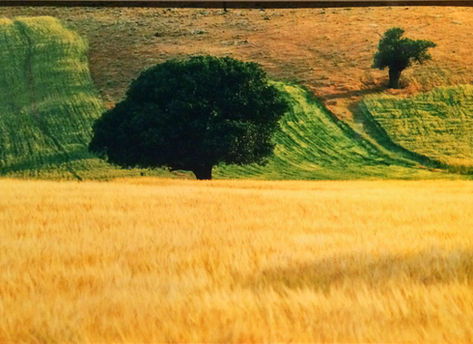Visual Dialogues | The Book of Kings | Shirin Neshat & Fereydoun Ave | March 2019
Secret of Words
Mehran Mohajer & Sadegh Tirafkan
November 2006
Total Arts Gallery at the Courtyard and Massoud Nader Present exhibition of Photography by Sadegh Tirafkan with support of Silk Road Gallery this exhibition is accompanied by photographs of Mehran Mohajer Sadegh Tirafkan is a persevering artist who navigates through time and culture in search of his place and identity as an Iranian man in the contemporary world. The medium of photography has become his main platform to construct powerful visual plays, using a combination of elements that he seasons sufficiently with symbolism.
The significance of symbolism throughout Tirafkan’s body of work comes from his Persian root in which direct dialogue is rarely used, but frequently replaced by symbolic languages. How do you inform a culture that has three thousand years of history, rich in tradition and essentially a homogenous and male dominated society? Tirafkan expresses his concerns through images of numerous self-portraits and portraits of friends. He once said, "I began photography by recording what surrounded me. Now I take what is around me in the studio and make it into what I see through the prism of my life and culture." Tirafkan poses himself and others in the studio time after time to explore the meaning of being a contemporary Iranian. Blending tradition, history and memory, he recreates visually compelling scenes that build visceral connection to his ancient country. And this is where the strength and beauty of Tirafkan's work lie.
In reinventing and revisiting Iranian tradition he is also criticizing and challenging his ancestors' long-standing authority. In spite the highly eloquent appearances; I see two hidden trends in his work, which the artist has perhaps introduced even without realizing it: a theatrical staging of all the historic drama of his country, all the painful events of which he experienced intensely, and a discreet journey towards a spirituality which emanates from his whole vision. Here, Tirafkan surreptitiously rejoins the mystical quest which remains, whether we like it or not, the key-stone of any metaphysical edifice of the Iranian world. Born in Iran in 1965, Tirafkan trained as a photographer at the University of Fine Arts in Tehran. Since the late 1990’s he has participated in numerous solo exhibitions and group shows, in Tehran, Paris and New York.
Tirafkan’s work offers an eloquent meditation on modern Iranian man’s relationship to his past and on his search for a meaningful identity in the present. Identity, history and memory have been central concerns in the work of non-western artists since the era of colonialism. Tirafkan, frequently using himself as a model, revisits and reinvents these themes in his series of enigmatic yet visually compelling photographs. He uses words and symbols to communicate with the audience and
Abstract & Lanscape
Mohseni Kermanshahi
February 2005
A. Mohseni was born in 1960, in Kermanshah west of Iran. He started painting with Master Rahim Navesi before moving to Tehran. He held his first one-man show in 1994 and has come a long way from his humble beginnings. Landscape, traditional life and nature were always his main subjects to paint and after moving to UAE he found this passion in the local scenery. T
his exhibition would be an exceptional one in Mohseni’s career since he is entering a new period after 10 years of professionally painting landscapes and still life witch is still the close to Mohseni’s heart in a different way. Mohseni has participated in more than 40 solo and group exhibitions in Iran including Tehran Contemporary Art Museum, Australia, Kuwait and the UAE. Mohseni has won a special award from Tehran Contemporary Art Museum as the best Artist of the year in 1996. Mohseni has published 2 books, which are: 1. Nature in the painting of Abdol Hossein Mohseni 2. Painting of Abdol Hossein Mohsenis He is working on two new books at present.
ABBAS KIAROSTAMI
1940 - 2016
Tehran, Iran
Abbas Kiarostami was an eminent Iranian director known for films such as Close-Up (1990), Taste of Cherry (1997), and Ten (2002). Addressing a variety of topics, including spiritual journeys and suicide. Along with his movies, Kiarostami also created poetry, paintings, and photography. “The calling of art is to extract us from our daily reality, to bring us to a hidden truth that's difficult to access,” he once said. Born on June 22, 1940 in Tehran, Iran, Kiarostami began his artistic career as a painter while attending the University of Tehran School of Fine Arts. In the 1960s, he worked in advertising as a painter, designer, and illustrator. In the following decade, the artist became a key figure in the development of cinema in his country leading up to the revolution of 1979. Despite the Iranian revolution and its hardline Islamic reforms, Kiarostami stayed in the country and continued to direct short features. By the 1990s, he had gained acclaim from a number of foreign directors, including Quentin Tarantino, Martin Scorsese, and Werner Herzog. The artist went on to receive the Federico Fellini Gold Medal in 1997, the Akira Kurosawa Award in 2000, and the Fellowship of the British Film Institute in 2005. Kiarostami died on July 4, 2016 in Paris, France.




